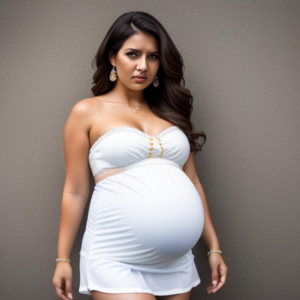Effects of Pregnancy on the Body
Motherhood is the most sacred duty in life. The continuation of our generation is only possible thanks to women who are “mothers”. While mothers carry out this amazing and irreplaceable duty, they take on very serious responsibilities. At the same time, mothers also lose something from their own bodies. After birth, the body anatomy of many women is not the same as before.
Let’s examine the subsequent changes:
Abdominal area
The most important externally noticeable sign of pregnancy is that the abdomen begins bulging. This increasing expansion as the baby develops causes significant changes in the abdominal wall.
Abdominal skin
Tears occur due to tension in the skin, which expands beyond its normal tension. These tears are not usual skin lacerations that are visible to the eye and create open wounds with bleeding on the skin. Here, the deep part of the skin, which is the lower layer and whose medical name is “dermis”, is torn. Since the upper (visible) layer of the skin remains intact, these tears are not initially noticeable. As with every injury, these deep skin wounds heal over time and leave a small or large scar. What is noticeable from the outside are the scars left after healing. These are commonly called “stretch marks” or “pregnancy lines”. Its medical name is “stria”. Once these scars form, unfortunately there is no definitive treatment and they may remain for life.
Tension in the abdominal skin initially leads to significant area expansion and loosening. After birth, this loosening may return and the abdominal skin may tighten and pull itself back to its previous condition again. However, in cases where the elastic fibers that keep the skin taut are seriously damaged and cannot do their job properly, the loosened abdominal skin sags and accumulates towards the groin and folds on itself.
Abdominal muscles
The abdominal area is constantly under pressure from the internal organs. The abdominal skin is not strong enough to resist this pressure. The task of keeping the abdomen tense is carried out by the muscles that form the abdominal wall. As the baby (medical name is “fetus”) grows in the abdomen, these muscles are stretched under serious pressure. Sometimes, tears may occur in these muscles, which are not noticeable from the outside, just like stretch marks. After birth, relaxation due to muscle tension usually improves. However, in some cases, the abdominal muscles cannot return to their previous tension and tears create additional loosening. In this case, a serious bulge occurs because the abdominal wall cannot withstand intra-abdominal pressure and cannot create sufficient tension.
Breasts
Breasts gradually expand during pregnancy and this size remains constant as long as breastfeeding continues. After breastfeeding, the breasts usually return to their previous size. However, strias and permanent loosening may occur in the breast skin, just like in the abdominal skin. Loss of elasticity of the skin causes the breasts to sag. Apart from this, some breasts may stay bigger than initial size after breast feeding.
Weight change
The mother gains weight during pregnancy and this excess weight is usually released after birth. However, there may be rare cases where the weight gained after pregnancy cannot be fully lost, and this negatively affects the mother’s overall body image.
The events described above lead to significant postpartum body image disorders in some mothers. These are the cosmetic costs of being a mother. All mothers deserve to regain their former body beauty after birth.
Recreating the mother (Mommy Makeover)
One of the most important features of the summer months is swimming in the sea. Beaches are places where both men and women have the opportunity to show off their bodies. Especially women here, if they are confident in their bodies, they want to be proud by showing it off. Mothers are no different from other women in this regard. However, if the negativities caused by birth are very obvious, they may tend to prefer more covered swimsuits. Plastic Surgery offers various options to correct these problems of mothers.
Americans are good at giving different and striking names to surgeries. They prepared a package of corrective surgeries for mothers whose bodies were damaged after birth and introduced it under the name “Mommy Makeover”, that is, to fix the mother again. In this package, tummy tuck, breast enhancement surgery and liposuction surgery are offered to the patient individually or together.
Female body
Whether viewed from the front or from behind, the beautiful female body has different characteristics than men’s. Women have a thin and long neck, shoulders that are not too wide, but breasts that extend to the sides just below them. Below the breasts comes a tapering waist and then distinctly protruding hips. The protrusion of the hips narrows smoothly down to the knees. In many cultures, this image is referred to as “hourglass”. This image is related to the female genetic structure and if it is damaged, contrary to popular belief, it cannot be easily corrected by gaining or losing weight or exercising. Exercising can eliminate excess weight and strengthen the muscles, but it cannot give the desired appearance to the female body. In fact, unlike men, women’s developed and noticeable muscles do not give an aesthetically attractive appearance.
The main surgeries needed by the mother
We, plastic surgeons, make some examinations and plan accordingly to treat a mother with a damaged body. Let’s review, starting with the upper parts of the body:
Breasts
The following changes may occur in this most affected organ due to hormonal changes and milk filling:
Dropping
It is the most common disorder. The reason is that the skin becomes loose and sagging as a result of excessive expansion and then shrinkage again. The nipple (areola), which is attached to the skin, also hangs down. As the ligaments between the breast tissue and the skin loosen or lengthen, the breast tissue hangs lower than it should normally. The protrusion of the breasts outwards decreases. This gives the impression that the breasts have become smaller, even if there is no decrease in breast tissue. In its treatment, “breast lift” surgeries are performed. The nipple, which has shifted downwards, is lifted upwards. The sagged and widened breast tissue is brought back into a cone shape with special stitches. In this way, both the perpendicularity and forward protrusion of the breasts are increased. This procedure significantly positively affects the appearance and attractiveness of the breasts.
Staying big and dropped
Sometimes the breasts remain slightly larger than before after breastfeeding. It is usually seen together with sagging. In this case, both breast reduction and lift surgery are performed together.
Shrinkage
After breastfeeding is stopped and excess weight is lost, the breasts may become smaller than before. In this case, breast enlargement surgery is performed with a suitable method (silicone breast implants or augmentation with the person’s own fat tissue).
Waist and abdominal area
After the breasts, the most affected part of the body is the abdomen. The changes here vary according to different layers.
The most common abnormality in the abdomen is pregnancy lines or stretch marks called “Stria”. This is followed by sagging of the abdominal skin and bulging of the abdomen. I explained the reasons for these occurrences at the beginning of the article.
Abdominal disorders are usually corrected by surgery called “tummy tuck” (medical name Abdominoplasty). Two operations are performed here:
- The abdominal skin is detached from the underlying abdominal wall and pulled downwards, and the excess part is cut off and discarded. In this procedure, the skin under the navel is generally completely removed and most of the pregnancy stretch marks are eliminated. Stretch marks above the navel attract less attention as they are drawn to the lower parts of the abdomen.
- The loosened or torn abdominal wall muscles under the abdominal wall are joined towards the middle with strong stitches. The abdominal wall, strengthened in this way, removes the bulge in the abdomen by pressing the internal organs inwards.
Hips and legs
For some mothers, the excess weight gained after birth may not be lost. This is due to fat accumulation in the body. Fat tissue can accumulate in every region, especially in the waist, hips and hips. In rare cases, the opposite may occur and the hips may become smaller. These events mean that the desired shape of the female body is distorted.
The treatment principle is as follows: Fat tissue is removed from the excess areas and given to the deficient areas. Even if they are not given away, the removed fat tissues are never thrown away and are stored in the deep freezer (-80 degrees) in case of future use.
Conclusion
Women make very important compromises on their bodies when they become mothers, and we, plastic surgeons, provide them with different treatment options to eliminate these negativities.




Recent Comments